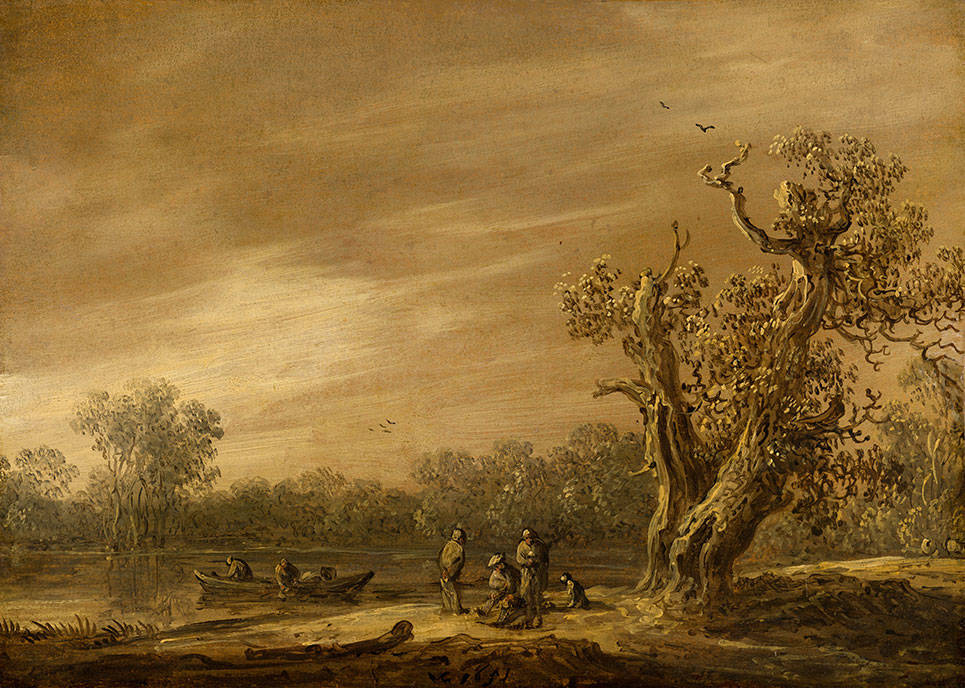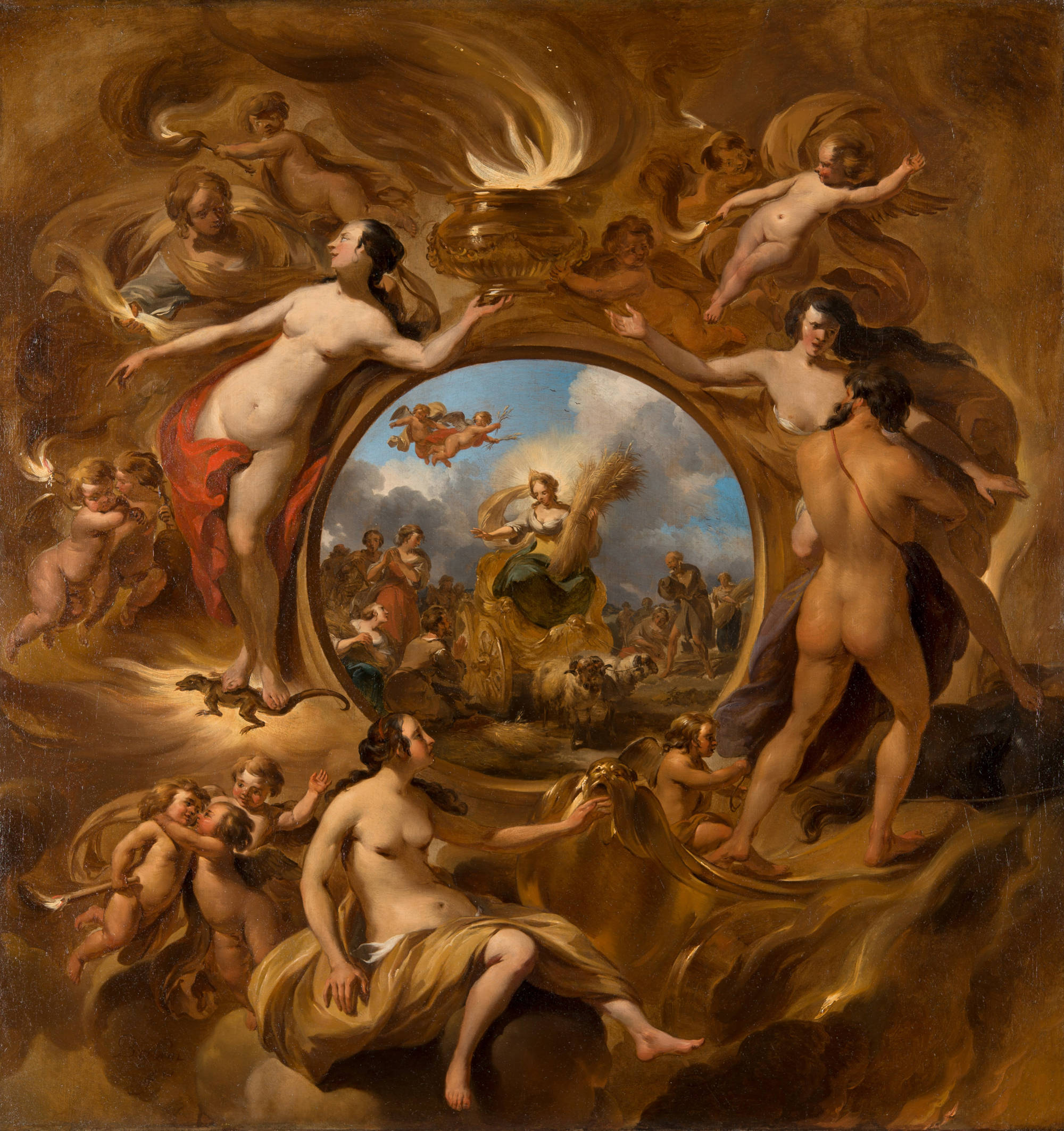Ongoing Research

In recent years the Mauritshuis has tried hard to fill gaps in the provenances of objects in its collection relating to the 1933-45 period.
New data are available on the website, where we ask viewers to pass on any additional information to the museum. Since the completion of the Image Bank Project, for which the entire collection was digitally photographed thanks to the financial support of the BankGiro Lottery, photographs of almost all of the backs of paintings are posted on the museum’s website. There are often old labels or inscriptions on them that can provide more information about the former owners. It is precisely such small details that can be decisive in determining the provenance of paintings.
Fishermen by the Lakeshore by Jan van Goyen was the subject of recent research. The provenance of this painting, purchased from the art trade in 1967, was difficult to establish, as Van Goyen was extremely productive and made many landscapes of this type and this size. In close collaboration with the research team of the heirs of the Jewish art dealer Jacques Goudstikker (1897-1940) we were able to establish that the painting must have come from his trading stock. After Goudstikker's death, this was sold against the wish of his widow. The museum is now awaiting a request for restitution, which the heirs must submit to the Minister of Education, Culture and Science under the existing procedure. As a custodian of the Dutch National Art Collection, the museum cannot decide for itself whether an artwork will be returned—this is the minister’s responsibility, acting on the advice of the Restitutions Committee.

Dilemma
For any potential acquisitions, the Mauritshuis conducts thorough provenance research. We were recently faced with a very unusual case concerning three paintings by Nicolaes Berchem. The museum has had his Allegory of Summer from the NK Collection on display since 1992. It is part of a set of four seasons that was dispersed at the end of the nineteenth century. The other three paintings in the set came on to the art market last autumn. There are gaps in the provenance of all three paintings, but no indication whatsoever was found that they had been in Germany or any other of the Nazi-occupied territory between 1933 and 1945.
Even so the decision to purchase the paintings created a dilemma: should the Mauritshuis buy these three paintings along with a painting from the NK Collection? On the one hand this was a unique opportunity to bring the four seasons together again and show the set in the way it was intended to be seen, as overdoors in a seventeenth-century house. On the other hand, the restitution policy is aimed at returning works of art that were involuntarily handed over between 1933 and 1945 to their rightful owners. It goes without saying that the Mauritshuis cooperates fully with this.

After consulting several experts, the museum weighed up the pros and cons and decided to go through with the purchase, with the approval of its own Supervisory Board. This prevented the three paintings from being sold as separate lots and jeopardising the opportunity to reunite the set. Since then, the museum asked independent specialist Sophie Olie to carry out further research into the provenance of Allegory of Summer, which came into Nazi hands after it was auctioned in The Hague in 1944. Together with other NK pieces, this painting was claimed in 2009 by heirs of art dealers Katz, but according to the Restitutions Committee there were no indications at that time that it was still owned by Katz during the occupation. Sophie Olie made a discovery in an archive that has only been accessible for a few years: the painting had in fact been offered at auction by the firm of Katz. At that time the Jewish owners of this gallery had already fled the Netherlands and had handed over the business to non-Jewish contacts. The Mauritshuis will continue to research the provenance of this painting and other works of art in its collection. New information may come to light as various archives are opened up or placed on the Internet.
